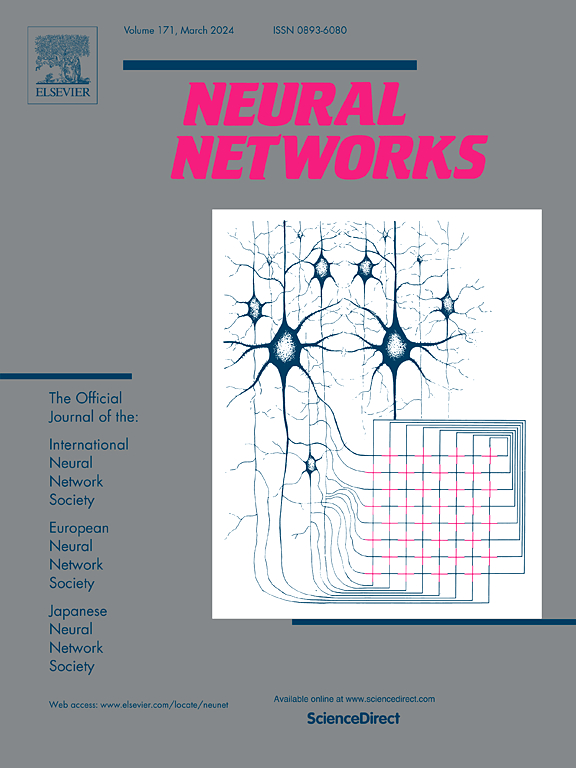不同数据类型的对称发现
IF 6
1区 计算机科学
Q1 COMPUTER SCIENCE, ARTIFICIAL INTELLIGENCE
引用次数: 0
摘要
等变神经网络将对称性纳入其体系结构,实现了更高的泛化性能。然而,构造等变神经网络通常需要数据类型和对称性的先验知识,这在大多数任务中很难实现。在本文中,我们提出了一种通过训练神经网络来发现对称性的方法,该神经网络近似于任务的输入输出映射。利用李代数刻画连续群的等变性和不变性(等变性的一种特殊情况),并通过训练后的神经网络的输入、输出和梯度直接求解李代数空间。然后,我们对该方法进行了扩展,使其适用于多通道数据和张量数据。我们验证了LieSD在具有对称性的任务上的性能,例如两体问题、惯性矩矩阵预测、顶夸克标记和旋转MNIST。与基线相比,LieSD可以准确地确定李代数基的数量,而不需要昂贵的组抽样。此外,LieSD可以在非统一数据集上表现良好,而基于gan的方法则失败。代码和数据可在https://github.com/hulx2002/LieSD上获得。本文章由计算机程序翻译,如有差异,请以英文原文为准。
Symmetry discovery for different data types
Equivariant neural networks incorporate symmetries into their architecture, achieving higher generalization performance. However, constructing equivariant neural networks typically requires prior knowledge of data types and symmetries, which is difficult to achieve in most tasks. In this paper, we propose LieSD, a method for discovering symmetries via trained neural networks which approximate the input–output mappings of the tasks. It characterizes equivariance and invariance (a special case of equivariance) of continuous groups using Lie algebra and directly solves the Lie algebra space through the inputs, outputs, and gradients of the trained neural network. Then, we extend the method to make it applicable to multi-channel data and tensor data, respectively. We validate the performance of LieSD on tasks with symmetries such as the two-body problem, the moment of inertia matrix prediction, top quark tagging, and rotated MNIST. Compared with the baseline, LieSD can accurately determine the number of Lie algebra bases without the need for expensive group sampling. Furthermore, LieSD can perform well on non-uniform datasets, whereas methods based on GANs fail. Code and data are available at https://github.com/hulx2002/LieSD.
求助全文
通过发布文献求助,成功后即可免费获取论文全文。
去求助
来源期刊

Neural Networks
工程技术-计算机:人工智能
CiteScore
13.90
自引率
7.70%
发文量
425
审稿时长
67 days
期刊介绍:
Neural Networks is a platform that aims to foster an international community of scholars and practitioners interested in neural networks, deep learning, and other approaches to artificial intelligence and machine learning. Our journal invites submissions covering various aspects of neural networks research, from computational neuroscience and cognitive modeling to mathematical analyses and engineering applications. By providing a forum for interdisciplinary discussions between biology and technology, we aim to encourage the development of biologically-inspired artificial intelligence.
 求助内容:
求助内容: 应助结果提醒方式:
应助结果提醒方式:


